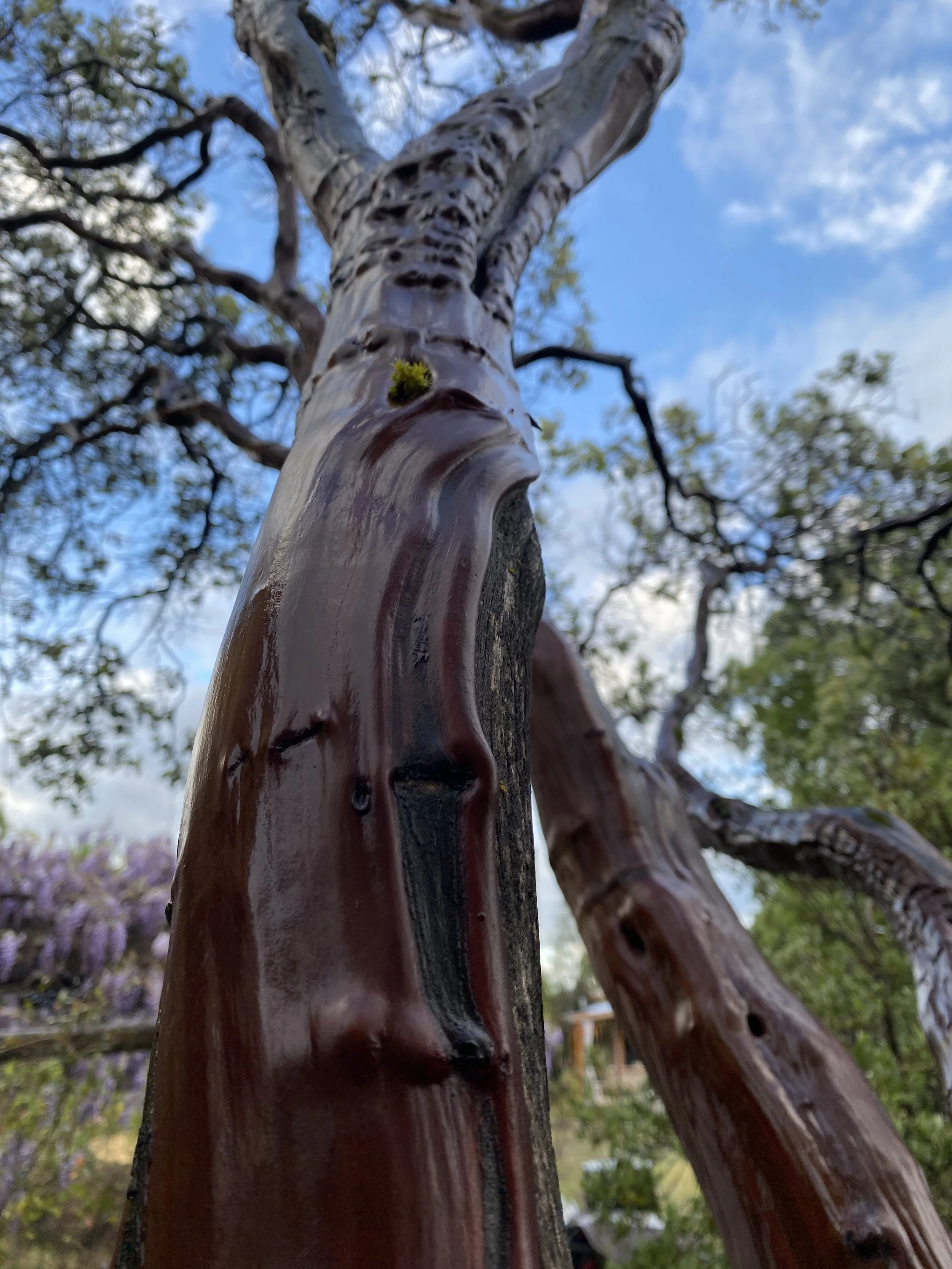Mastering Repair in Relationships
/A Toolbox That Helps Build Great Relationships
Couples worry that conflict, especially extended conflict, heads them in an unsurvivable direction. Conflict is not the upending problem. Being positioned and resigned is. If during the conflict, we are willing to breathe, to reflect, to communicate even the harder truths, we are stepping onto the luscious path of deepening our relationships. When we listen to our beloved with a keen desire to understand, to experience empathy, and to receive the presence of our partner, then we run the chances of growing closer to one another rather than farther away. When we verbally express what part we have played in the conflict, even if it was not our intent to do so…then the relationship has the kind of fortitude that will nourish deep and abiding love.
This risk-taking in the realm of vulnerability is an exquisite ingredient for intimacy. In all of my experience of working with many different couples as a Sex and Relationship Coach, I’ve been most surprised by how intentional repair conversations have almost as much of a chance to lead to sensually profound connections as provocative flirtation does. It’s not just the make-up sex, it’s the quality of receptivity that makes room for revitalizing the desire to want to let your beloved in.
Repair is not about an apology, it is not even about trying to “fix” anything actively. It is about taking time to understand. Within listening, we look inward and see what we can own within our behavior that may have contributed to the upset in the relationship. Healthy repair practices in relationships are a sign of high-level partnership. It takes a large measure of humility and a genuine ability to stay curious and connected both to ourselves and our beloved. But when triggers are involved, this can be tricky territory.
When you work with me, you learn very quickly that I use the pain scale model of triage from an emergency room visit to map levels of a trigger; zero- no trigger, ten- seeing red. Many of us look calm, at about a two. But inside, we are a seven. Some of us look like a seven, but inside we are a three. Mapping our triggers not only helps us to be mindful of our state of being but also helps us communicate to others what our internal landscape is. Repair conversations aren’t very productive if we are triggered above a four. Our wounds are running the show between a trigger of five to ten. Self-regulation; finding the resources that help to calm our nervous systems and our emotional bodies, is what is most necessary at that point. Once we feel present enough to both speak and listen (trigger level between a one and four) then repair conversations can be a healthy bridge to deeper connection. Knowing what works for you in terms of self-regulation, is half of the battle. Giving your partner and yourself a commitment to come back to the conversation when you are both more resilient and grounded takes courage. Risk clear offerings of time frame for a re-connect if a pause for self-regulation is necessary.
There is a step-by-step process to orchestrating a healthy repair conversation for you and your partner. Reach my way to schedule some time so we can practice that process together. Many of my couples have found the experience of repair much more viable after seeking support to establish a deeper understanding of how to curate the framework that you can then implement at home.
Until then, here are some of the tools that will help you fine-tune your capacity for repair. These tools can be practiced daily whether a conflict is happening or not. The following prompts are not just helpful for romantic partnerships, but also for parenting, friendship, community consciousness, and internal growth. Again, conflict has the potential to grow any relationship, as long as you don’t continue to perpetuate the unhealthy vortex. Changing one thing in an unhealthy pattern has a higher chance of changing everything. Repair done well is a path to deeper intimacy and ultimately lays the groundwork for a profound, provocative, and fulfilling partnership.
Repair Conversation Tools:
Before learning the structure for repair conversations, fine-tuning your awareness of your inner landscape around triggers, is the first step. Cultivating these practices will help you have beneficial repair conversations. (**Repair Conversation Framework available upon request).
Gauge your trigger level when there is an upset. Assess where you are on the pain scale of triggers; one-no trigger up to 10-highly triggered.
Map your triggers. Begin to notice what thoughts, emotions, sensations, and impulses are underneath the “facts” that formulate your upset. You might be saying, “I have asked you 15 times to let me know more often that you have been thinking about me and you still don’t do it.” The facts may be true. But when they are stated with tone, posturing, and emotional undertones the conversation has moved from a factual conversation into an emotional one. Being mindful of this shift is very important. Getting clear about the emotions, sensations, and thoughts that are happening in you when you are expressing the facts, is a bridge to a deeper connection with yourself and your beloved. Under the facts, you might find the emotional context, “I feel sad and constricted and unimportant when I don’t hear from you.” Imagine the possibility of coming towards your partner by expressing your emotional landscape more often rather than pointing to their faults. You might come into the conflictual engagement triggered, with strong words about fault with heightened facts, but if you can shift to expressing your inner landscape primarily, your partner is more likely to understand you and the impact of their actions.
It is also helpful to look at what impulses arise in you from the trigger. For instance, you may shut down and say something harsh, hurting them in the process. Or say nothing at all but shut yourself off from connection. Noticing our impulses allows us to own our behavior internally, but also relationally. This practice of noticing comes in handy from the standpoint of self-evolution, but also allows us deeper access to “cop-to” our part in the alchemy of conflict.
Notice your defensiveness. Normally when we defend or try to fix when faced with a partner's upset, we make it about us rather than about the person who is expressing the upset. Imagine the possibility of connection that could occur if we validate our partner’s feelings without assuming their upset means that we are bad or wrong.
Practice putting yourself in your partner’s shoes. Practicing this in an untriggered moment can give you more ability to do it when triggers are occurring. For instance, they may be telling you about something that bothered them with a friend, practice imagining what your partner is experiencing as if you were in their shoes. Empathy is a great skill to strengthen no matter what, but especially for repair conversations.
Practice “copping to it” or owning your part. Copping to it doesn’t mean you did the thing your partner is accusing you of, it means that you have had behaviors or even experiences of yourself in the past or in the present circumstance that has the same flavor as the accusation. For example, you can say, “It makes sense that you are upset that I didn’t follow through in that way. Following through is an area I’m working on and I can see how my inability to do this in the timing you expected has impacted you.”
In particular, notice when you shame or blame. Learning to catch yourself shaming and blaming is a helpful skill across the scope of a relationship. Both with yourself and with others.
Practice checking in with your partner after you share your strong emotions about something, stabilizing their understanding that the way they listened helped. Gratitude and positive feedback are essential ingredients for building the strength of a relationship.
If you’ve already had at least four sessions with me in which we have practiced repair conversations together, reach my way and I will send you the blueprint for repair conversations so you can keep practicing at home. If not, schedule an appointment soon so we can start the process of learning to implement healthy repair between you.
Also, I’ll send news about some upcoming immersion work offerings with me in the next few months. Whether you are from out of town or live in the area and would like to schedule an immersion session of ten to twelve hours of work together over two and a half days, book your time now so you can get yourself on my calendar. Immersion sessions, otherwise known as Intimacy Boot(y) Camp, have become one of my favorite ways to work with folks because it allows us time to titrate the profound nature of this work. Curiosity, playfulness, presence to the tender care of the harder conversations, sensual and sexual discoveries, and communication about what you’d like more of and what you’d like to let go of are just some of the experiences to be had through your deep dive with me. If you have questions about the process, send me an email or text and we can set up a fifteen-minute complimentary call to discuss the possibilities. Or follow the link below.





